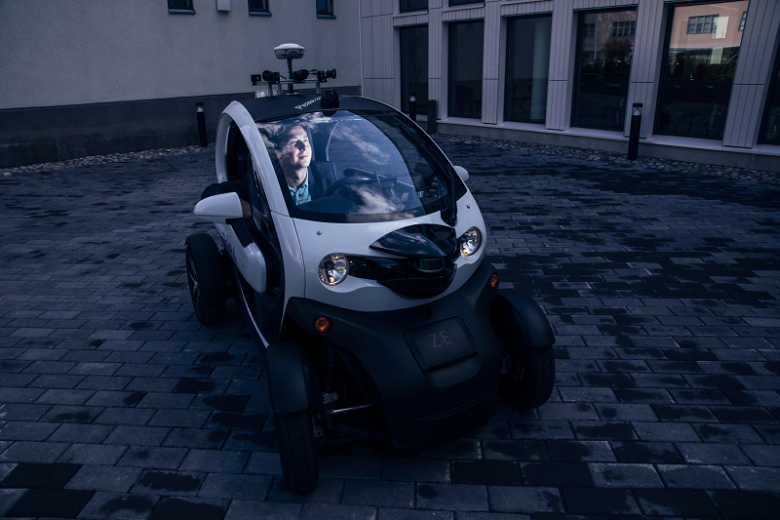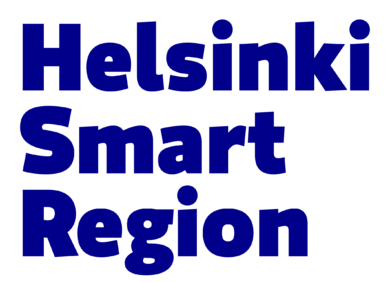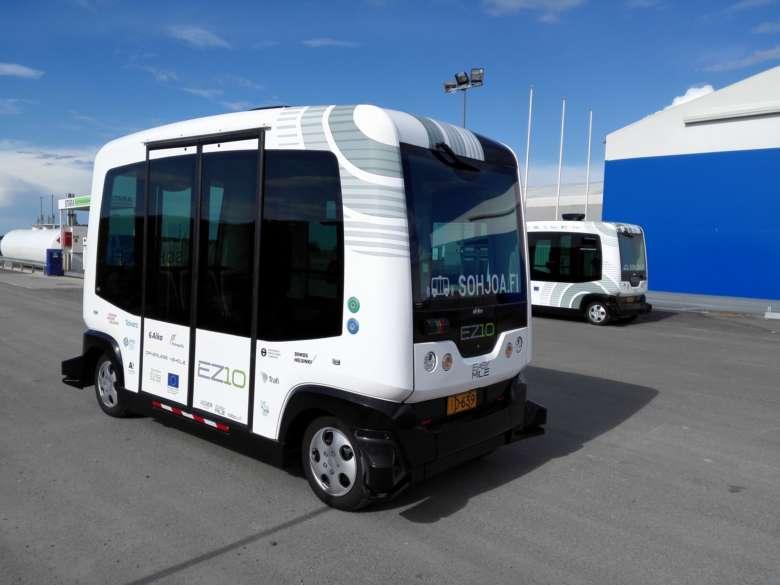Cases

Industrial modernisation
Take a peek at the future: Helsinki-Uusimaa Region at the Forefront of Smart Mobility
Published:
”Automated metros, robot cars, intelligent traffic control systems – you name it. Intelligent transport is already present in many parts of the world”, says Harri Santamala, CEO of Sensible 4, a Helsinki Region-based company that develops vehicle automation systems.
Smart mobility – or in more common terms, intelligent transport – refers to a technological and structural transformation of traffic. It includes a whole variety of innovations developed to making moving within and between growing cities more efficient and ecologically sustainable. The transformation is driven by innovations in artificial intelligence, big data and sensor technology, as well as cooperation between universities, companies and municipalities.
”Smart mobility ranges from intelligent self-driving vehicles to the intelligent monitoring systems that make sure traffic runs smoothly and safely. Another intelligent development is a shift in the way we consume traffic: there is a rapidly increasing number of options for buying Mobility as a Service instead of buying your own vehicle,” Santamala explains.
Santamala is one of the top Finnish experts in intelligent transport. He has been part of smart mobility – in particular automated vehicle research and development in the Helsinki Region since day one, and knows where Finland stands globally.
”Finland is a pioneer in the field, and the Helsinki Region in particular is known for its advanced applications of autonomous driving and Mobility as a Service. We have the opportunity to become the leader in intelligent public transport and the efficient use of existing cars”, he says.
Big solutions from Finland in smart mobility
One of the key issues that intelligent transport aims to solve is the so-called “last mile issue”. This means supporting the public transport system at the outskirts of the city by bringing people closer to their own doorstep from bus and metro stations.
A globally known Finnish milestone was the piloting of an on-demand public transport service, KutsuPlus, by the Helsinki Regional Transport Authority and its partners in 2012–2015. It drove routes requested by service users and intelligently combined the fares of people going to the same parts of town. The service was discontinued due to the poor economic situation of municipalities at the time, but it was popular among users and revealed the growing demand for cost-effective forms of intelligent public transport.
“Services like these make public transport more accessible to people who live further away from metro or bus lines. The KutsuPlus buses had drivers, but autonomous driving provides a cost-efficient solution to the last mile issue through driverless vehicles like the ones we develop”, Santamala says.
Santamala is referring to a project called aIGO, in which Sensible 4 is a key executor. It is a multi-partner project piloted in Hämeenlinna and the Helsinki Region cities of Espoo and Vantaa. It aims to show that the robot car technology is ready for commercialization and now also works in the northern winter conditions. The goal is to make smart mobility, such as robot cars and buses a permanent part of public transport. Companies work on the cars and technology, while universities and municipalities focus on the groundwork and traffic planning in the piloting areas.
For now, the aim is to support the existing public transport network. However, Santamala says that once permanent business models within the public transport system are established, unprofitable bus routes could also be maintained through a cheaper, driverless service.
Driverless electric buses have been piloted in several projects in the Helsinki Region before aIGO, and Santamala has been a part of many of them. One notable project was called SOHJOA, which was the first project to test robot buses among public traffic and was run as a joint undertaking by Finnish cities and universities from 2016 to 2018.
SOHJOA attracted wide attention both in Finland and abroad. For example, the New York Times wrote about it, and it sparked interest and involvement in large Finnish companies, such as Nokia. SOHJOA was Finland’s Regio Stars finalist in 2017. Regio Stars Awards identify good European practices in regional development and highlight original and innovative projects.
“SOHJOA took off really fast and signified Finland’s entry into the field of autonomous transport. It also gave important insight on the challenges that had to be solved, such as the technology not always working in the midst of slush and snow, or the low speed sometimes causing irritated drivers of normal cars to overtake impulsively”, Santamala says.
Finnish conditions help smart innovations
The cutting-edge technologies developed in Finland help keep the wheels turning in terms of autonomous vehicle development. Artificial intelligence, 3D modeling of the environment and high-tech sensors developed by, for example, the Finnish company Vionice that’s now a part of Vaisala, give robot vehicles the ability to respond to their surroundings in real time.
Santamala’s own business, Sensible 4, was spawned as a result of one of the challenges faced in the SOHJOA project: the harsh Finnish weather. He founded the company together with outdoor robotics specialists from Aalto University, and it specialises in developing vehicle automation systems that work even when covered in ice and snow. While discussing his business, Santamala points to a pair of reindeer horns on the bookshelf in Sensible 4’s office.
“We received those as a gift from a Lappish woman who told us about the Lappish automated ride home: When the snowy weather gets rough in the Lappish wilderness, the reindeer keepers grab reindeer by their harness and get pulled home through the blizzard. Juto, the name of our first car, means a load-pulling reindeer in the Sami language”, he explains.
“So, if an autonomous car works in the Finnish winter, it works pretty much anywhere.”
In addition to the demanding weather in Finland, another factor advancing the development of intelligent transport is the Finnish legal environment. In Finland, unlike most countries, it is not forbidden by law to have automated vehicles drive among normal cars. This makes it easy to organise experiments and pilots.

The Finnish government also emphasises sustainable development in terms of project funding. For example, in 2016, the government launched a 30 million euro fund called AIKO, of which a significant part was directed at the improvement of labour mobility and commuter traffic across municipal boundaries in the Growth Corridor, a network of the 20 largest cities and municipalities in Finland.
From private ownership to Mobility as a Service
One of the AIKO-funded projects is called Kasvuvyöhykkeen kestävän liikkumisen palvelut (Sustainable Mobility Services in the Growth Corridor). Its goal is to map the business possibilities of existing sustainable mobility services in the Growth Corridor in Finland and collect feedback from service users in the area.
The project was initiated by Blox Car, one of the Finnish companies focusing on the sharing economy and the service part of intelligent traffic. Blox Car is the first company in Finland to offer a platform for peer-to-peer car rentals where cars are privately owned, instead of leased by companies as in car sharing services.
”When you take the bus, you don’t think about who owns it. Why should we think any differently about cars?” asks Paul Nyberg, CEO of Blox Car.
“Finland has 2.6 million households and the same number of cars. On average, a privately owned car is used for one hour per day, and the rest of the time it sits in a parking lot. We wanted to change this”, Nyberg says.
Blox Car has more than 6,000 users and the number is growing fast. Nyberg thinks that people are clearly getting used to the idea of having a car at their disposal only when they need one.
Peer-to-peer car sharing is common around Europe, but in Finland insurance and car registration policies previously made it difficult and risky. In 2015, the Finnish Transport Safety Agency, Trafi, changed its policies and ceased to require special registration for private cars in rental use. Blox Car fixed the insurance side of the problem together with the insurance company If. They established an insurance deal that covers theft or any damage to the car during a single rental only.
Nyberg says the goal is to to make peer-to-peer renting a form of complementary public transport, and the first step towards that is establishing a business model with the cities in the Growth Corridor.
Other companies focused on different aspects of Mobility as a Service include several Helsinki Region-based start-ups. For example, Coreorient’s PiggyBaggy offers shared deliveries for packages and goods. This means you can pay other service users to pick up or deliver a parcel for you if it’s conveniently along a route they would take anyway. Witrafi’s Rent-a–Park provides a marketplace that brings together users looking for temporary parking spaces and users willing to rent theirs out. And then there is MaaS Global, with its all-in-one mobile application Whim. People can use Whim to buy public transport tickets or, for example, a certain amount of taxi, shared car or bike fares per month.
“Finland has a great opportunity to become a leader in intelligent and more sustainable transport. The government programme and the Ministry of Transport and Communications have laid great foundations to build on, and Finnish advances in technology and digitalisation are helping us go forward at a high speed”, Nyberg says.
—
Helsinki-Uusimaa Regional Council has funded of the projects showcased in this article Sohjoa, aIGO and Sustainable Mobility Services in the Growth Corridor.
All projects implement the smart specialisation strategy of the region.
Image credits Vilja Pursiainen.
For further information, please contact:
Harri Santamala
CEO, Sensible 4
harri.santamala@sensible4.fi
For further information, please contact:
Harri Santamala
CEO, Sensible 4
harri.santamala@sensible4.fi










 Return to listing
Return to listing